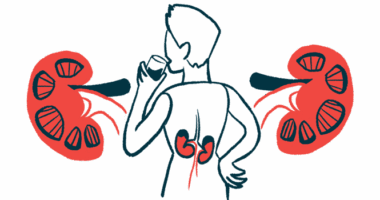Enlarged Spleen, Anemia and Family History Among Factors Indicative of Diagnosis, Study Reports

Signs such as anemia or enlarged liver and spleen, and characteristics such as family history of Gaucher disease (GD) should lead clinicians to consider a GD diagnosis, according to a new study. The findings also revealed that lack of awareness is a major obstacle for timely diagnosis.
The research, “Presenting signs and patient co-variables in Gaucher disease: outcome of the Gaucher Early Diagnosis Consensus (GED-C) Delphi initiative,” appeared in the Internal Medicine Journal.
GD patients may present various signs and symptoms, as well as varying clinical severity depending on disease type. The rarity and diversity of GD pose a challenge to identifying patients for diagnostic testing, leading to frequent delays between symptom onset and diagnosis, and potentially to complications that otherwise could have been prevented.
Lack of awareness among clinicians, multiple referrals, and focusing on other diseases with greater mortality rates are additional reasons for delayed diagnosis, the investigators said.
The global Gaucher Earlier Diagnosis Consensus (GED-C) initiative has used a structured communication system to build global expert consensus on aspects relating to GD diagnosis and management.
Now, researchers examined the findings of the initiative, aiming to identify symptoms and patient characteristics suggestive of early type 1 or type 3 GD and to determine the project’s impact on patients and clinicians. Early disease was defined as the time before symptoms significantly affected quality of life.
Funded by Shire, the study involved three co-chairs and a voting panel with 22 individuals from 16 countries with median GD experience of 17.5 years and collectively managing almost 3,000 patients.
Responses from the first of three rounds were grouped into similar themes. In round 2, the expert panel rated the importance of each factor — clinical signs, characteristics or statements — to barriers to early GD diagnosis and GED-C impact, using a five-point scale.
Subsequently, factors or statements rated with a score of three or greater by more than 75% of respondents were taken to round 3, when panel members indicated their level of agreement, also using a five-point scale.
Consensus — defined as a minimum of 67% agreement score of four or greater — classified the major signs. The remaining factors were classified as minor signs.
Matching the literature, enlarged spleen and liver, low platelet count, bone-related manifestations, anemia, excess of an iron storage protein called ferritin, and the presence of a protein in the serum or urine, accompanied by plasma cells in the bone marrow, soft tissue, or peripheral circulation were major signs identified in GD type 1. Family history of GD and Ashkenazi Jewish ancestry were two major characteristics identified in this patient population.
In GD type 3, these major signs were identified: enlarged liver and spleen, oculomotor disturbances, low platelet levels, epilepsy, anemia, bone pain, motor disturbances, and exaggerated, forward rounding of the back. Family history of GD was a characteristic also identified in these patients.
Lack of disease awareness due to GD’s rarity was the highest-scoring statement related to diagnostic barriers in GD. Overlooking mild early signs and failure to consider GD as a diagnostic differential were other major barriers to early diagnosis.
Regarding GED-C impact, the statements with the highest scoring referred to the association of earlier diagnosis and appropriate monitoring with improved outcomes and with reduced serious or irreversible late-onset complications.
“Based on these findings the authors suggest that the unexplained presence of at least two signs, or of one unexplained sign in conjunction with one of the co-variables should cause physicians to consider GD in their differential diagnosis,” the scientists stated. “Clinicians who are not specialists in GD can use this guidance to determine whether GD needs to be considered in the differential diagnosis of a patient.”



